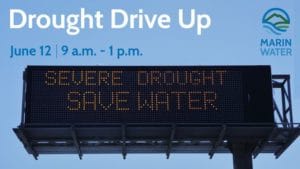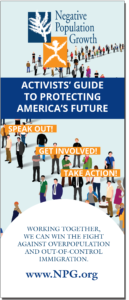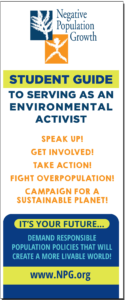Water Crisis in the West: One Community’s Rise to Face Water Challenges
- NPG
- July 16, 2021
- NPG Commentary
- 7 Comments
The Effects of Summer’s Relentless Drought in Healdsburg, California
In California, in the middle of wine country, there is a city named Healdsburg. With a population of 11,845, this Sonoma County community has taken new measures to ensure responsible, sustainable usage of the area’s extremely limited water supply.
In a statement released by the city, they explain the urgency of the new restrictions, noting: “Due to the exceptional drought and significant loss of water rights, Healdsburg's City Council implemented new water restrictions to preserve our water supply through the remainder of the dry season.”
Mandatory water restrictions went into effect Saturday, June 12th. Those restrictions include: 74 gallons of water per day per resident, commercial water use reduced by 40%, turn off automated irrigation for all industrial, commercial, and residential customers, and fines for up to $1,000 per day for violations.
Speaking in basic terms to the purpose of the new restrictions, Healdsburg conservation analyst Felicia Smith said: “Our end goal is to insure [sic] that we have adequate drinking water and are able to flush our toilets come October and November…”
Another measure, taken by water agencies in Sonoma County (and neighboring Marin and Mendocino counties), was the “Drought Drive-By” campaign, hosted at various locations in each county on June 12th. Residents of these communities were invited to stop at their local Drought Drive-By location to pick up a free water-saving toolkit, which included:
- Bucket to catch water for reuse
- WaterSense labeled low flow showerhead
- 5-minute shower timer
- WaterSense labeled low flow faucet aerator
- Toilet dye test tablets
- Self-closing garden hose nozzle
Extreme measures such as these are not to be discounted. This real-life scenario – playing out in California wine country – could be used to describe countless other communities in the western half of the United States. They are a clear, unmistakable sign that a significant portion of this country is in trouble because of climate change. So much so that one outlet recently suggested, “we can’t call these climatic conditions a drought anymore, because that implies it will end. Years are variable, and snowpack, rainfall, and temperatures oscillate, but we have to look at the science and assume that the hot, dry trends we’re seeing will continue—and continue to get worse.”
A June article published by Outside magazine sums up the alarming cascading effects of the drought nationwide, saying: “By June 1st, snowpack in the Sierra Nevada was at zero percent of its average, and California’s governor had declared a drought emergency in two-thirds of the state’s counties. After a record-breaking fire year in 2020, wildfire risks were already high, and the state’s agriculture industry, which supplies a huge amount of the country’s veggies, fruits, and nuts, was facing shortages and cutting crops to compensate. In Oregon, fragile, threatened salmon are dying because streams and lakes are drying up. Wide swaths of northern New England and the upper Midwest are abnormally dry. Even Hawaii is at elevated risk for wildfires.”
With summer in full swing, weather patterns are pointing to yet another season of extreme weather. A June 17th article from the Washington Post details what has happened so far: “One of the most extreme heat waves ever observed in the western United States this early in the season is near its climax. The punishing blast of heat, which began Sunday, has set hundreds of records while simultaneously worsening a historically severe drought, intensifying fires and degrading air quality. About 40 million Americans have endured triple-digit heat and more than 50 million have been under excessive-heat warnings this week.”
With our environment in such a critical state, it is crucial to be aware of (and follow!) local regulations and suggested safeguards. It is also imperative that we embrace environmental stewardship by seeking to know more about the issue, talking with everyone about these historically relevant weather patterns, and showing up to public hearings hosted to discuss concerns and new procedures with local leadership.
 NPG’s Activists’ Guide to Protecting America’s Future features a variety of ways for anyone to use their voice at the grassroots level to engage and inspire others to move together towards a more environmentally sustainable way of life – where our everyday eco-systems are valued and protected.
NPG’s Activists’ Guide to Protecting America’s Future features a variety of ways for anyone to use their voice at the grassroots level to engage and inspire others to move together towards a more environmentally sustainable way of life – where our everyday eco-systems are valued and protected.
 For readers looking to share information with the next generation, we invite you to check out NPG’s Student Guide to Serving as an Environmental Activist, created specifically for middle and high school students.
For readers looking to share information with the next generation, we invite you to check out NPG’s Student Guide to Serving as an Environmental Activist, created specifically for middle and high school students.

Cheri Taylor
Southern California has always had only enough natural water for 30,000 people a year. The California aqueduct takes water that the northern part of the state can ill afford to lose. The only long term solution, that I can see for the southwest is to finally build canals across the flood planes that get the spring overflow from the Missouri River and others, have the Army Corp of Engineers drill through the lower Sierras and bring the water to Lake Mead, Lake Havasu, the Colorado River and all the places that need it. We finally have the technology to do it. This would be a worthwhile use of infrastructure money. I think also that those in Southern California who don’t want desalination is possibly because it would spoil their ocean views?
Mike
I feel ALL of us should be interested in population control. It’s the old “Too many rats in a cage”. They either kill each other (war), or die of disease (no explanation necessary). We should only replace ourselves. We actually need –> negative population growth.
This may be accomplished by correct taxation, i.e., not giving tax breaks for big families as is happening now, rather than the reverse; and significant peer pressure. No matter what kind of lightbulbs you use, what kind of recycling you practice, or what kind of car you drive, it’s not going to be nearly enough.
We have almost 8,000,000,000 people on this earth. Life is in constant survival mode for most folks worldwide now. When that population doubles to 16 billion or beyond, good luck to us …
Nelson Hyde Chick
Of course the tech evangelists will tell us not to worry on account technology with save us, but if over a twenty-year period you make a human activity 25% more efficient per capita using green tech, but on account of population gain and bringing people out of poverty the per capita grows by 50% what has been gained? Nothing, it is still a loss. Green tech without population stabilization won’t work; it will just kick the problem down the road a tad.
Nelson Hyde Chick
Stephen, it wasn’t Sacramento’s fault that in the time the United States’ population doubled California’s population tripled.
Kathleene Parker
But what do we accomplish–as Lake Mead is at the drop-dead point for a federal water emergency and Lake Powell (the largest reservoir in North America) is close behind–as Biden invites in the world to the tune of nearly 30 MILLION A DECADE, soon to be closer to 40 MILLION A DECADE, if he, Kamala, Nancy, et al, get their way? And what do we accomplish, if we have a now-DEREGULATED news media that make darned sure we never get one bit of information on the POPULATION ASPECTS of what OVER immigration is doing to us?
Stephen Russak
California had 30 years to build new resoviors and construct desalination plants along the coastal areas. And leadership did nothing to plan ahead for the current draught conditions. It is amazing to watch the utter stupidy of leadership in Sacramento, letting a once beautiful State slowly turn into a cesspool of homelessness and crime in major cities.
Robert Fireovid
An even better story is about the Utah town that put the brakes on development…! https://www.planetizen.com/news/2021/06/113555-water-supply-concerns-prompt-development-moratorium-utah-town